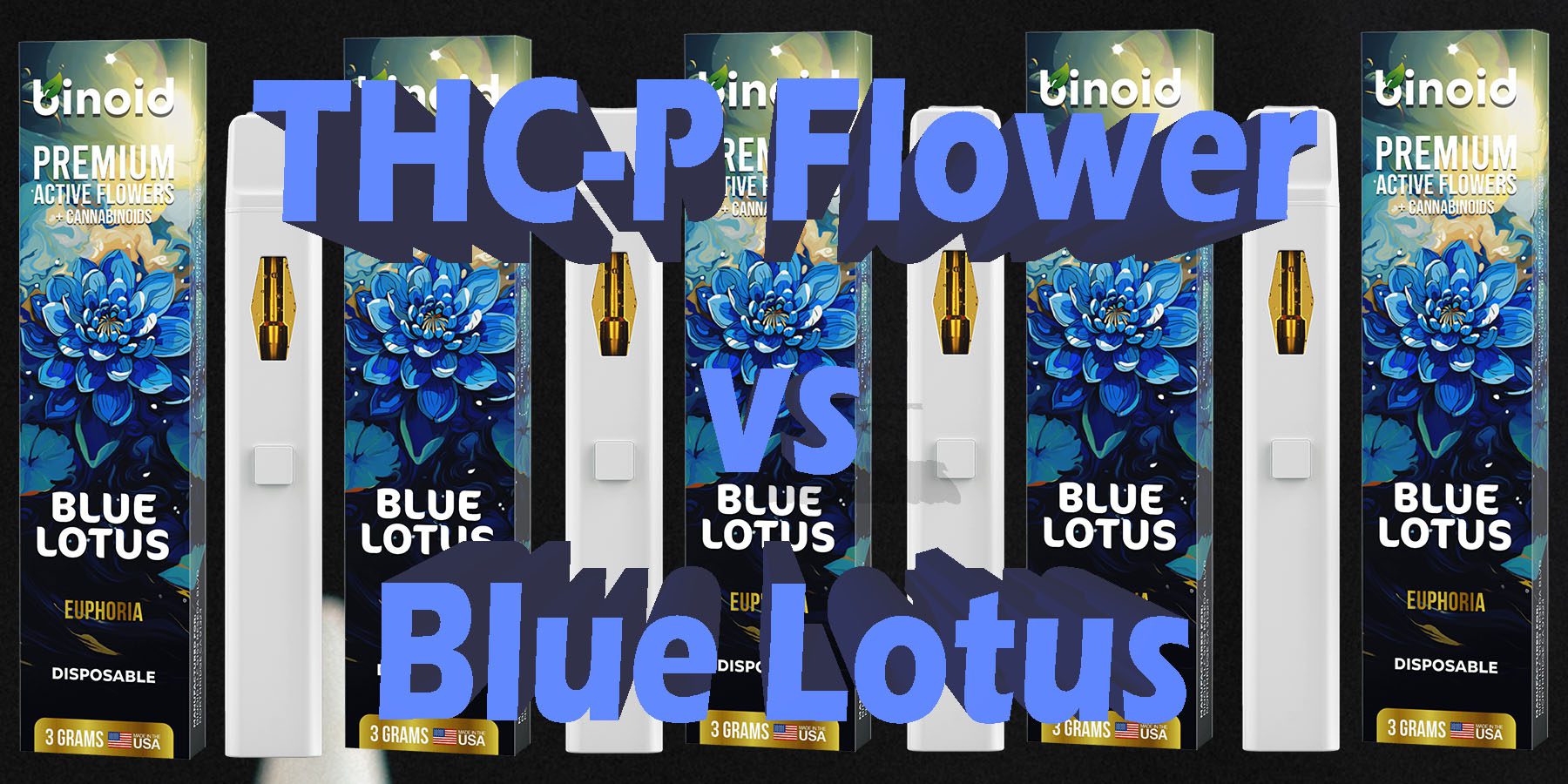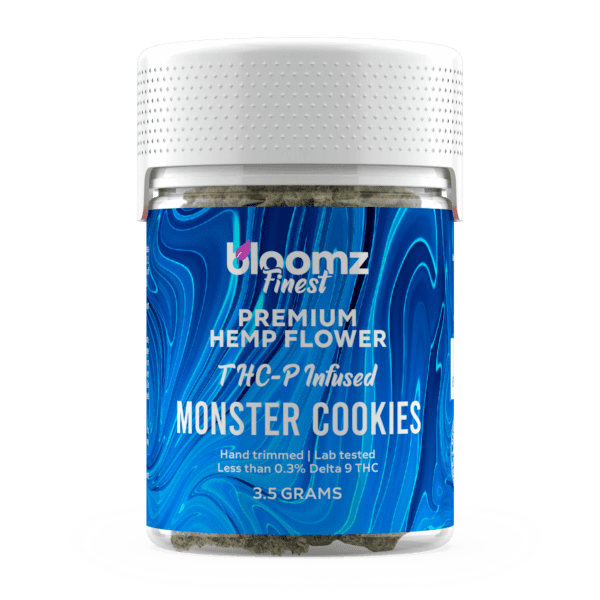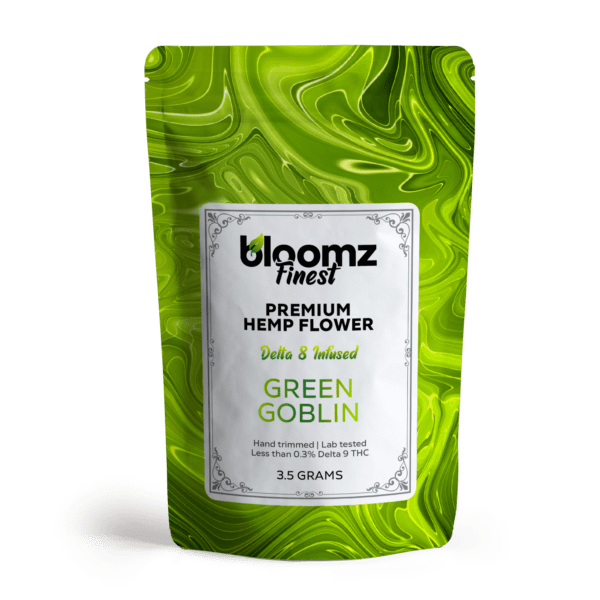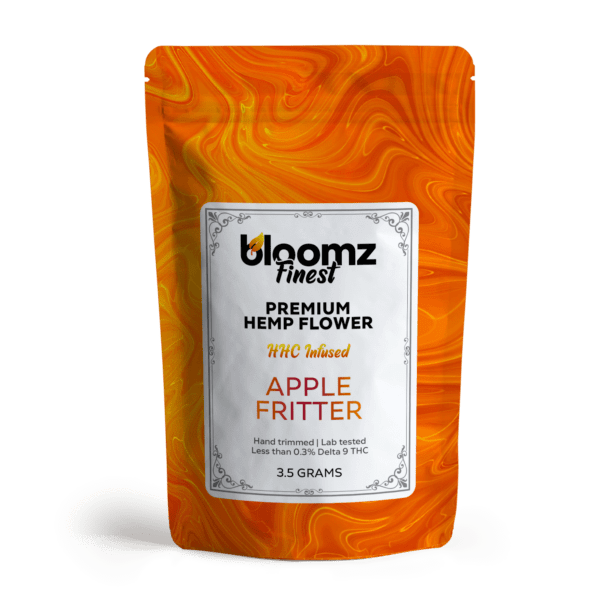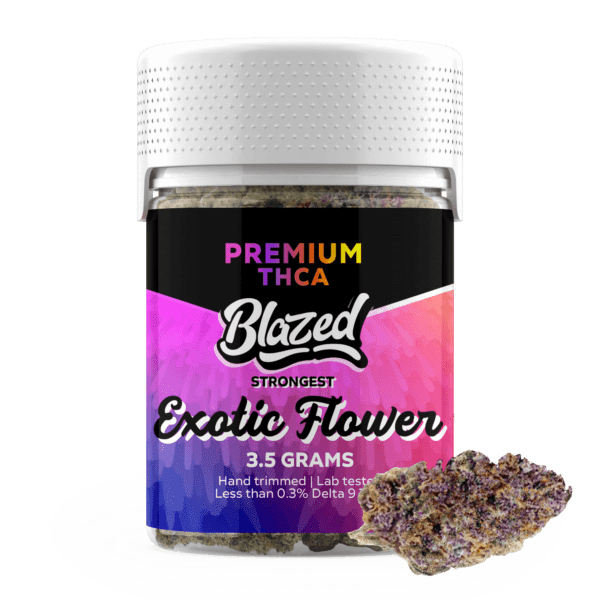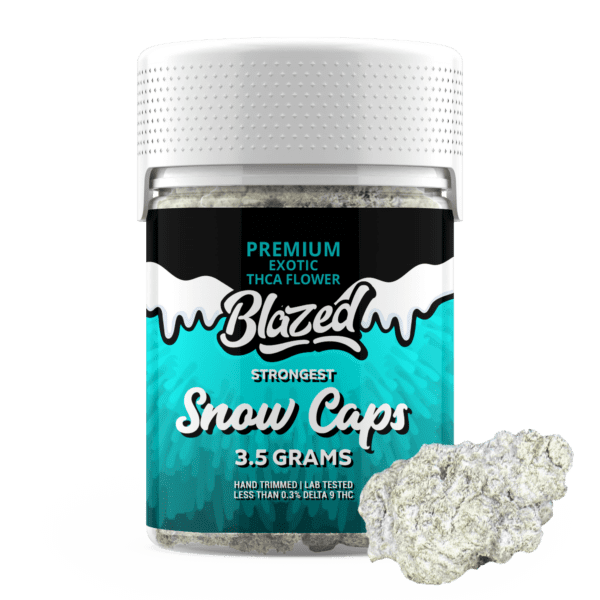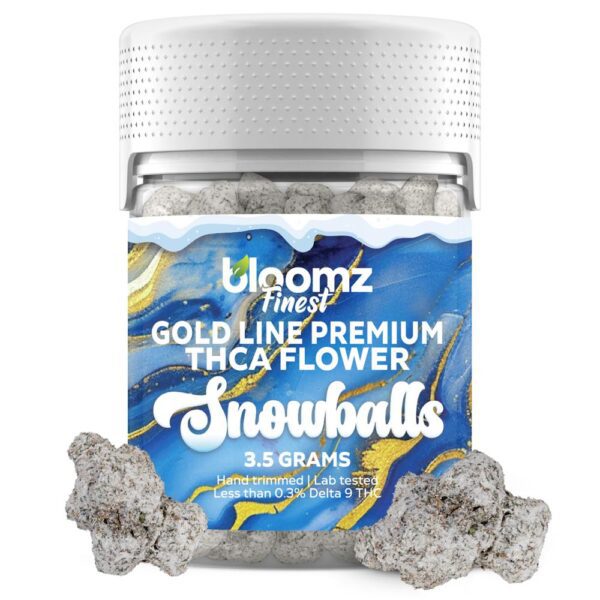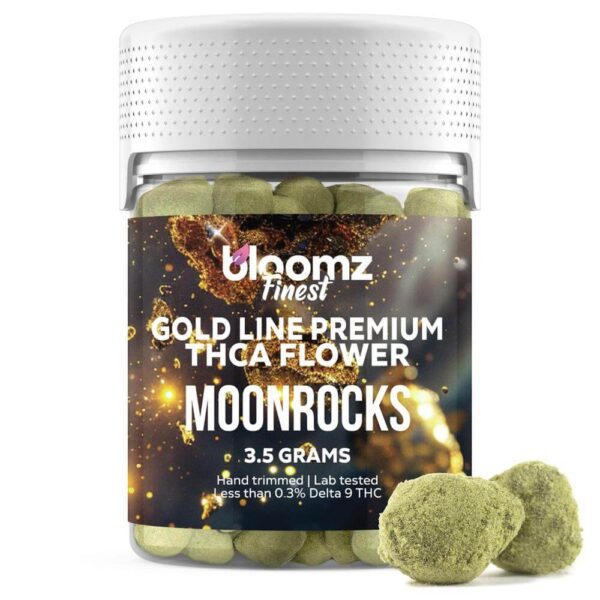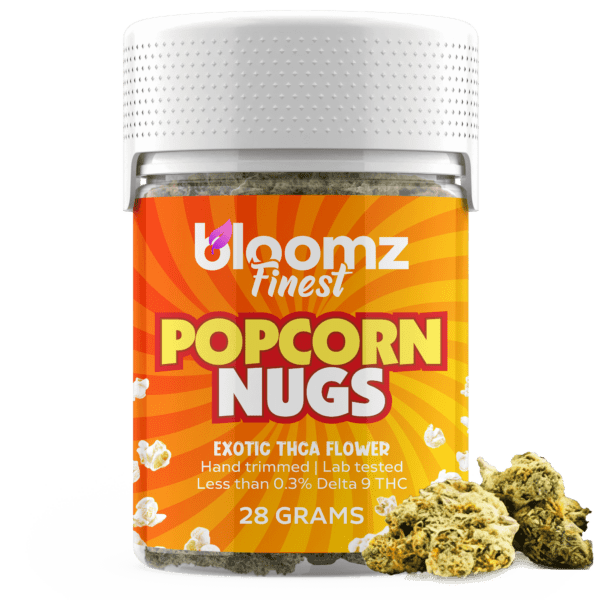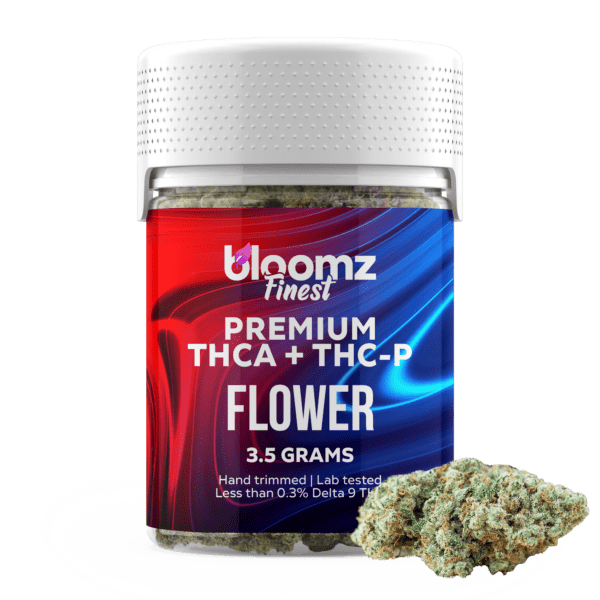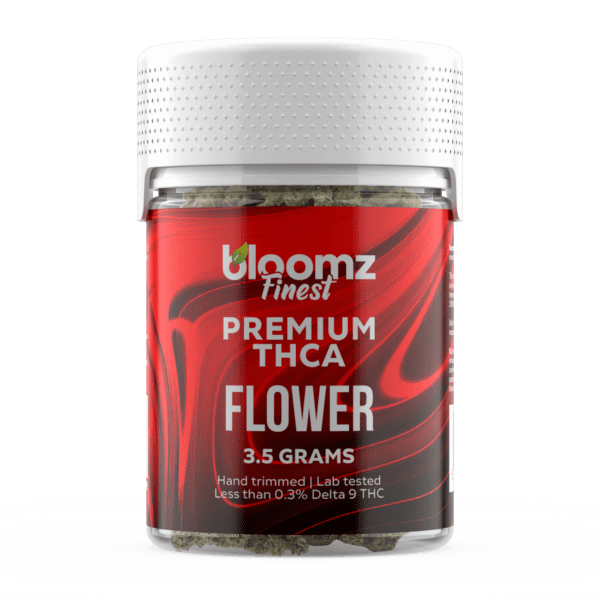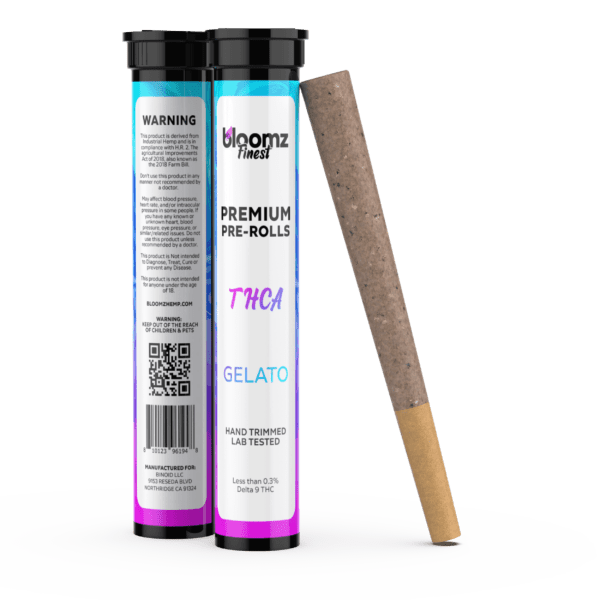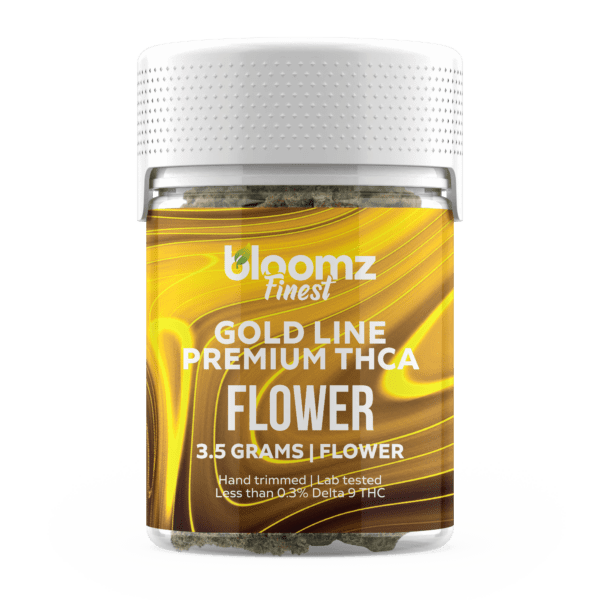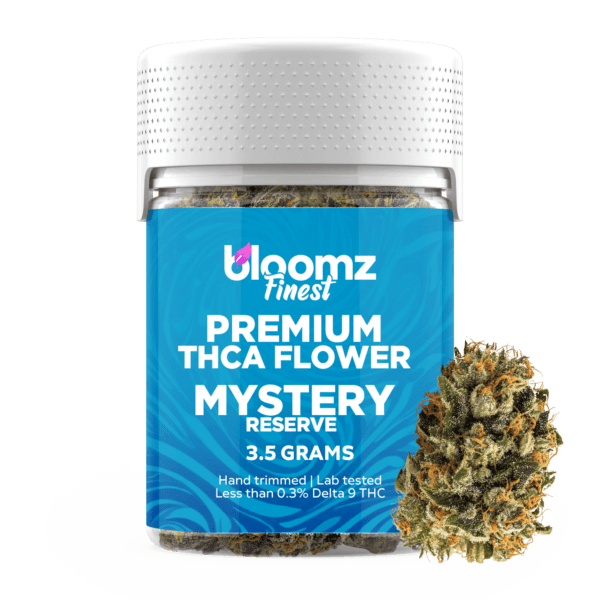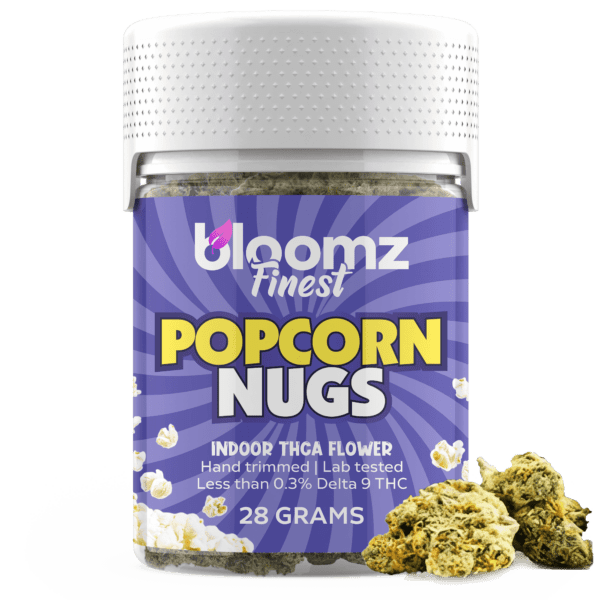At the fascinating crossroads where botanical history and cutting-edge science converge, a compelling dialogue unfolds between two vastly different agents of consciousness. In one corner stands a titan of modern cannabinoid discovery, a molecule of such profound potency that its very existence challenges the known limits of the cannabis experience. In the other rests an ancient, sacred water lily, a botanical steeped not in laboratory beakers but in the gilded rituals of pharaohs and the tranquil waters of the Nile. This is the ultimate contrast: the explosive power of a newly understood compound versus the gentle, time-honored serenity of a flower revered for millennia.
The journey to understand both is to explore the entire spectrum of botanical potential, from the intensely psychoactive to the subtly spiritual. Choosing between them requires more than a casual curiosity; it demands a clear intention and a deep respect for the profound and divergent paths they offer.
TO BUY THC-P FLOWER CLICK HERE
Recommended products
Why It’s Important to Breakdown the Matchup of THC-P Flower vs. Blue Lotus
In the rapidly evolving and often bewildering landscape of psychoactive and therapeutic botanicals, clarity is not just a convenience—it is a critical component of safe and intentional use. The comparison between THC-P flower and Blue Lotus is particularly vital because it represents one of the most extreme dichotomies available on the market today. This is not a subtle distinction between two similar products; it is a stark contrast between overwhelming potency and gentle subtlety. A thorough breakdown serves to arm consumers with the essential knowledge needed to navigate this polarity, preventing potentially negative experiences and empowering them to make choices that are truly aligned with their tolerance levels, personal goals, and desired outcomes.
This analysis is about creating a map that clearly marks the towering peak of one and the tranquil valley of the other, allowing each individual to choose their path with wisdom and respect, specifically as it pertains to:
Highlighting an Extreme Spectrum of Potency: The most critical reason to compare these two is to illustrate the immense chasm in their psychoactive intensity. THC-P is renowned for being one of the most potent cannabinoids ever discovered, with a binding affinity for the body’s CB1 receptors that is reportedly many times stronger than that of conventional Delta 9 THC. Its effects can be incredibly powerful, long-lasting, and potentially overwhelming for even seasoned cannabis users. Blue Lotus, conversely, operates on an entirely different system through its alkaloids, producing a very mild, non-intoxicating psychoactivity characterized by calm and lucidity. Juxtaposing these two directly serves as a vital educational tool, managing expectations and underscoring the absolute necessity for caution and respect when dealing with a compound as powerful as THC-P.
Emphasizing the Importance of Responsible Use and Dosing: Given the extreme potency of THC-P, a detailed comparison is a matter of harm reduction. New users, mistaking “THC-P flower” for a typical cannabis product, could easily consume too much and have a profoundly negative and uncomfortable experience. By contrasting it with the gentle and forgiving nature of Blue Lotus, we can frame the conversation around responsible dosing. It becomes clear that THC-P requires a “start low and go slow” approach measured in single inhalations, while Blue Lotus allows for more liberal consumption. This breakdown is essential for fostering a culture of safety and self-awareness in the botanical space.
Differentiating Between a Natural Botanical and a Highly Processed Product: Consumers deserve to know the origins of what they are consuming. Blue Lotus is a natural product—the dried flowers and petals are used directly. THC-P flower, like its Delta 8 counterpart, is a manufactured item. It consists of a base of non-intoxicating hemp flower that has been artificially coated or infused with a THC-P distillate, which is itself synthesized in a lab. This distinction is vital for botanical purists who prefer natural products, and it also raises important questions about the quality of the manufacturing process, the potential for residual solvents, and the need for comprehensive third-party lab testing for purity and safety.
Navigating Complex and Often Parallel Legal Arenas: While their chemical natures are worlds apart, both THC-P and Blue Lotus exist in unique legal spaces that consumers must understand. THC-P’s legality is tenuous, derived from the 2018 Farm Bill’s definition of hemp but challenged by the DEA’s stance on synthetic cannabinoids and banned by many individual states. Blue Lotus is federally unregulated and legal in most of the country, a status born from its historical use outside the scope of modern drug laws, with the notable exception of Louisiana. A clear breakdown of these separate legal frameworks ensures consumers can make purchases and use these products without inadvertently running afoul of state or local regulations.
Aligning Product Choice with User Intention: Ultimately, the goal of a detailed comparison is to help individuals find the right tool for the right purpose. Are they seeking an earth-shatteringly potent, deeply psychoactive, and recreational experience? Or are they looking for a gentle, spiritual aid for meditation, creative focus, and quiet reflection? THC-P and Blue Lotus are tailored for diametrically opposed intentions. A proper breakdown prevents the profound mismatch of a user seeking gentle relaxation and accidentally consuming an ultra-potent cannabinoid, or a high-tolerance user seeking a powerful high being underwhelmed by a subtle flower. It ensures the user’s intention is honored by their choice.
Contender #1: THC-P Flower
At the absolute cutting edge of cannabinoid science stands a true behemoth: THC-P flower. This is not your grandfather’s cannabis, nor is it a subtle variation on a familiar theme. THC-P represents a quantum leap in potency, a compound that has reshaped the understanding of just how powerfully a cannabinoid can interact with the human body. As a flower product, it is a testament to modern ingenuity, a carefully crafted item that infuses a non-intoxicating hemp base with the power of this extraordinary molecule.
It is designed for the seasoned explorer, the psychonaut with a high tolerance who is actively seeking to journey to the furthest shores of the cannabis experience. THC-P flower is a product of profound intensity, demanding the utmost respect and a deeply cautious approach, yet promising an experience of unparalleled depth, duration, and euphoria for those who are prepared for its power. It is the current pinnacle of potency in the hemp-derived marketplace.
Tetrahydrocannabiphorol (THC-P) is a naturally occurring phytocannabinoid that was only recently discovered by a team of Italian researchers in 2019. Its discovery sent shockwaves through the cannabis science community due to its unique molecular structure. Like its famous cousin, Delta 9 THC, THC-P has a central structure that allows it to bind to the body’s cannabinoid receptors. However, it possesses one crucial difference: a longer alkyl side chain. Whereas Delta 9 THC has a five-carbon atom (pentyl) side chain, THC-P boasts a seven-carbon atom (heptyl) side chain. This seemingly small modification dramatically enhances its ability to bind with the CB1 receptors in the brain, which are the primary gateways for THC’s psychoactive effects.
Think of the CB1 receptor as a lock and the cannabinoid as a key; the longer side chain allows THC-P to fit more securely and effectively into the lock. Scientific research suggests that THC-P may have a binding affinity for the CB1 receptor that is up to 33x stronger than that of Delta 9 THC. This does not mean it is necessarily “33 times stronger” in a simplistic sense, but it does mean that it is exceptionally potent and can produce powerful psychoactive effects at much lower doses.
Recommended products
The creation of THC-P flower is a testament to the sophisticated manufacturing processes developed within the modern hemp industry. It is essential to understand that, like Delta 8 flower, THC-P flower is not a naturally grown product. Because THC-P exists in such minuscule concentrations in the actual cannabis plant, it isn’t feasible to extract it directly. Instead, the potent THC-P distillate used to create these products is synthesized in a laboratory, and then carefully applied to a base of high-quality hemp flower. The precision required in this process is paramount, as even a small miscalculation with such a potent compound could lead to an overwhelmingly intense product:
Cultivation of Premium Hemp Flower: The foundation of any good THC-P flower is a high-quality, legally compliant hemp flower. Expert cultivators grow specific strains of hemp, often indoors, that are rich in CBD or CBG and have a robust and appealing terpene profile. This base flower is then harvested, carefully trimmed, and slow-cured to preserve its aroma and ensure a smooth smoking experience.
Extraction and Conversion: While THC-P is naturally occurring, it is only present in cannabis in microscopic quantities, making direct extraction impossible for commercial production. Instead, chemists start with abundant, hemp-derived CBD. Through a complex process in a controlled laboratory setting, the CBD molecules are chemically rearranged and converted into THC-P. This process yields a thick, highly concentrated oil known as THC-P distillate.
Formulation and Blending: Pure THC-P is so potent that applying it directly to flower would create a product that is potentially unsafe and unmanageable for most users. Therefore, reputable manufacturers create a blended distillate. They will mix the THC-P with a less potent cannabinoid,most commonly Delta 8 THC, to create a more balanced and predictable formula. This allows them to control the final potency of the product.
Infusion Process: The carefully formulated cannabinoid blend is then applied to the cured hemp flower. The distillate is often gently heated to make it less viscous and then sprayed evenly over the buds. Other methods include using a cryo-process to freeze the distillate into a powder for dusting or using a light tumbling process to ensure all surfaces of the flower are coated.
Third-Party Lab Testing: This final step is the most crucial for consumer safety. The finished batch of THC-P flower is sent to an independent, third-party laboratory. The lab conducts a full panel of tests to verify the potency of THC-P and other cannabinoids, and, most importantly, to screen for any harmful residual solvents, pesticides, or heavy metals, ensuring the final product is both potent and safe for consumption.
The market for THC-P flower is tailored for the high-end of the potency spectrum and, as such, is somewhat more specialized than the broader Delta 8 market. The types and categories available reflect a focus on delivering this exceptionally powerful experience in a high-quality format. The quality of the final product is a direct result of two factors: the quality of the base hemp flower and the purity and skillful application of the THC-P distillate. Because of the extreme potency, users typically consume much less of this flower at a time, making the quality of each inhalation particularly important.
The available formats cater to different user preferences, from those who like to handle the raw flower to those who prefer the convenience of a ready-made product.
Indoor THC-P Flower: This represents the premium standard. It utilizes top-shelf, indoor-grown CBD or CBG hemp flower as its base. This flower is prized for its flawless appearance, dense structure, rich terpene profile, and overall quality. When infused with the THC-P blend, it results in a connoisseur-grade product that delivers the best possible experience in terms of flavor, smoothness, and effect.
Outdoor THC-P Flower: A more budget-conscious but still effective option, this product uses sun-grown hemp flower as its foundation. While outdoor flower might have a more rustic appearance, it can possess a wonderfully complex and natural flavor profile. This option makes the ultra-potent experience of THC-P accessible to a wider audience.
THC-P Nugs: This term refers to the standard, full-sized, infused buds that are the primary product sold. When a consumer buys a jar of THC-P flower, they are purchasing these nugs. They are selected for their good size and structure and represent the standard quality for this type of product.
THC-P Moonrocks: For the user seeking the absolute maximum potency possible, moonrocks are the answer. A THC-P moonrock is a multi-layered creation. It starts with a high-quality hemp nug, which is then dipped in or coated with a potent, sticky THC-P distillate blend. Before this coating can dry, the entire nug is rolled in a thick layer of cannabinoid-rich kief. The result is an incredibly dense, slow-burning, and overwhelmingly potent product that should only be approached by the most experienced consumers.
THC-P Pre-Rolls, Blunts & Joints: Offering convenience and a controlled dosage, pre-rolls are a popular option. These are pre-made joints or blunts that contain a specific amount of ground THC-P flower. They eliminate the need for any preparation on the user’s part and are perfect for trying the product without committing to a larger quantity. They also provide a useful, albeit still very potent, baseline for understanding one’s tolerance.
When encountering THC-P flower, it is essential to understand the role of the strain name (e.g., Indica, Sativa, Hybrid) listed on the product. This name does not refer to a strain of THC-P plant, but rather to the strain of the base hemp flower that was used in its creation. The hemp flower provides the product’s foundational aromatic and flavor profile through its unique blend of terpenes. Terpenes are the compounds responsible for the citrusy, piney, earthy, or fruity notes found in different cannabis varieties. Many believe these terpenes also help to steer or modulate the psychoactive experience, a concept known as the entourage effect.
Therefore, the overall experience of THC-P flower is a powerful symphony conducted by the intense psychoactivity of the THC-P itself, with the specific hemp strain’s terpenes acting as the nuanced instrumentation that colors the final piece:
Indica: A THC-P flower product with an Indica strain name, such as “Northern Lights” or “Ice Cream Cake,” uses an Indica-variety of hemp flower as its base. These strains are known for their relaxing, body-centric effects and are often rich in the terpene myrcene, which has an earthy, musky aroma. When the profound power of THC-P is combined with an Indica profile, the result is an experience of overwhelming physical relaxation and a deep, sedative-like calm, making it strictly suitable for evening use or moments of complete repose.
Sativa: When a Sativa hemp strain like “Sour Diesel” or “Green Crack” is used as the base, the product is designed to provide a more cerebral and uplifting journey. Sativa strains are typically high in terpenes like limonene and terpinolene, which provide bright, energizing citrus and fruit aromas. The combination of these terpenes with the intense euphoria of THC-P can lead to a powerful, cerebrally-focused experience characterized by creative rushes, profound thoughts, and a sense of vibrant energy.
Hybrid: Hybrid strains are the result of crossbreeding Indicas and Sativas, and they make up the majority of the market. A THC-P flower made with a Hybrid hemp strain aims to deliver a balanced, multi-faceted experience. Depending on its specific lineage, a Hybrid can be Indica-dominant (profoundly relaxing with a strong euphoric lift), Sativa-dominant (intensely cerebral with a heavy body sensation), or a true balance of both. This category offers a wide range of nuanced experiences built upon the foundational intensity of THC-P.
The legality of THC-P flower in the United States is a topic of significant complexity and debate, existing in a precarious legal gray area. Its claim to legality is staked on the 2018 Agriculture Improvement Act (the Farm Bill), which legalized hemp nationwide. The bill defines hemp as any cannabis plant, and its derivatives, that contains no more than 0.3% Delta 9 THC on a dry weight basis. Since THC-P is a cannabinoid other than Delta 9 THC, and the THC-P distillate used in products is derived from hemp-based CBD, producers and retailers argue that it is a federally compliant hemp derivative.
However, this interpretation is not universally accepted. The Drug Enforcement Administration (DEA) has stated that all “synthetically derived tetrahydrocannabinols” remain Schedule I controlled substances. As THC-P is created for commercial purposes through a chemical conversion of CBD, it could be considered “synthetically derived” under this rule, which would make it federally illegal.
This direct conflict between the legislative text and regulatory interpretation means THC-P exists in a state of high legal risk. Furthermore, many states have enacted their own specific bans on THC-P and other psychoactive hemp-derived cannabinoids, making it explicitly illegal within their borders regardless of the federal situation. Consumers must exercise extreme caution and thoroughly research their state and local laws.
Recommended products
Given that THC-P flower is, at its core, a form of smokable cannabis flower, it can be consumed using all the familiar and traditional methods. The primary objective of any consumption method is to apply heat to the flower. This action vaporizes the infused THC-P distillate and the hemp flower’s native terpenes and cannabinoids, creating an inhalable vapor or smoke that can be absorbed rapidly into the bloodstream via the lungs for a fast-acting effect. However, due to the extreme potency of THC-P, the approach to these consumption methods must be drastically different. It is not a product to be consumed casually or in large quantities. A single, small inhalation is often more than sufficient for even experienced users.
The quality of the experience can be influenced by the chosen method, with vaporization often providing a more flavorful and less harsh experience than combustion:
Vaping (using a portable or desktop vaporizer): Vaporizing is highly recommended for THC-P flower as it allows for greater control and a cleaner experience. A dry herb vaporizer heats the material to a precise temperature, creating a vapor without burning the plant matter. This preserves the delicate terpene profile of the base hemp flower, leading to a much better taste. More importantly, it is easier to take a single, small, controlled puff from a vaporizer, which is the wisest way to approach a cannabinoid of this strength.
Smoking: This traditional method involves burning the flower in a pipe, bong, or rolled into a joint. While effective and providing a very rapid onset, it can be much harder to control the dose. If smoking THC-P flower, it is advisable to pack a very small amount—often called a “snap” or “one-hitter”—to ensure you do not inadvertently consume too much. Mixing a tiny crumb of THC-P flower with a larger amount of CBD flower is another common strategy for moderating the intense effects.
Cooking/Baking: Using THC-P flower to make edibles is possible but should only be attempted by the most advanced and cautious users with a very high tolerance. The flower would first need to be infused into a fat like butter or oil. The resulting edible would be extraordinarily potent and have a very long duration of effects, potentially lasting for over 12 hours. Dosing would be extremely difficult and carries a significant risk of an overwhelmingly negative experience if done incorrectly. Using pre-made, lab-tested THC-P edibles from a reputable source is a much safer alternative.
The overall effects of consuming THC-P flower are best described as a profoundly amplified and intensified version of the traditional cannabis experience. Due to its powerful affinity for the CB1 receptor, the onset can be surprisingly rapid and the effects are of a magnitude that often surprises even veteran cannabis consumers. The primary characteristic is an overwhelming wave of euphoria and mental bliss that is far more enveloping and profound than what is experienced with Delta 9 THC. This cerebral journey is often accompanied by significant perceptual shifts; colors may seem more saturated, sounds may take on new depth, and the user’s thought processes can become deeply introspective or creatively expansive.
Physically, THC-P induces a powerful and heavy body sensation that can feel deeply relaxing and sedative, often leading to a strong desire for rest and comfort, a phenomenon known as “couch-lock.” A crucial aspect of the THC-P experience is its remarkably long duration. The effects can persist for many hours longer than traditional THC, and a residual feeling can sometimes last into the next day. This is not a cannabinoid for the faint of heart; it is a full-commitment experience for those seeking the deepest possible journey.
Pros & Cons
Engaging with a cannabinoid as formidable as THC-P requires a sober and thorough evaluation of its powerful advantages and its significant potential drawbacks. This is a substance of extremes, and its profile of pros and cons reflects this reality. For a small subset of highly experienced users, its benefits are unparalleled, offering a novel and profound experience. For the vast majority, however, the potential risks and the sheer intensity of the effects demand serious consideration. A balanced understanding is not just helpful; it is an essential prerequisite for anyone contemplating an encounter with this titan of the cannabinoid world.
Pros:
Unparalleled Potency: For the experienced cannabis user with a very high tolerance who may find traditional products no longer provide the desired effects, THC-P‘s extreme potency is its greatest asset. It offers a new level of intensity and a novel psychoactive experience that can break through tolerance ceilings, providing a profound and powerful journey that is unlike anything else on the legal market.
Profound Euphoria and Bliss: Users who are well-prepared for its strength often report an experience of deep and overwhelming euphoria. The mental effects can be intensely blissful and mood-lifting, providing a powerful escape and a significant shift in perspective. This can lead to profound moments of introspection or heightened appreciation for sensory inputs like music and art.
Long-Lasting Effects: The extended duration of the THC-P experience can be a significant advantage for users who want a prolonged period of effects without needing to re-dose. A single consumption session can provide many hours of deep relaxation and euphoria, making it a potentially efficient option for a full afternoon or evening of leisure.
Requires Very Small Doses: Because it is so incredibly potent, only a very small amount of THC-P flower is needed to produce a strong effect. A little bit goes a very long way, which can make a purchase of THC-P flower last for a considerable amount of time. This can offer a unique form of value for the discerning, high-tolerance consumer.
Novelty and Exploration: As a relatively new and powerful discovery, THC-P offers a sense of excitement and exploration for the seasoned psychonaut. It represents a new frontier in the world of cannabinoids, providing an opportunity to experience a different and more intense facet of the cannabis plant’s potential.
Legal Accessibility (in some areas): Under the current interpretation of the 2018 Farm Bill, THC-P remains a federally compliant hemp derivative, making it legally accessible for online purchase and delivery in states that have not explicitly banned it. This provides a legal pathway to a hyper-potent product for adults in many parts of the country.
Deep Physical Relaxation: The physical effects of THC-P are often reported to be just as intense as its cerebral effects. It can induce a state of profound and heavy-bodied relaxation that many users find deeply calming. This powerful physical sensation is a hallmark of the experience for those seeking a potent body high.
Synergistic Potential in Blends: The potency of THC-P makes it a powerful ingredient in cannabinoid blends. Manufacturers can use it in small quantities alongside other cannabinoids like Delta 8 THC to significantly boost the overall potency and character of a product, creating unique and tailored effects profiles.
Familiar Consumption Methods: Despite its exotic nature, THC-P flower can be consumed using all the familiar methods like smoking or vaping. This allows users to engage with this new substance through a comfortable and well-understood ritual, lowering the barrier to entry for experienced individuals who are curious to try it.
Stimulates Innovation: The discovery and popularization of potent minor cannabinoids like THC-P drive further research and innovation in the hemp and cannabis industry. This encourages scientists to explore the hundreds of other compounds in the plant, potentially leading to new discoveries and a deeper understanding of its complex pharmacology.
Cons:
Extreme Potency is a Significant Risk: The single greatest con of THC-P is its extreme potency, which can be a serious liability. For new, inexperienced, or low-tolerance users, the effects can be terrifyingly overwhelming, leading to intense paranoia, confusion, and extreme discomfort. The risk of a “bad trip” is substantially higher than with any other common cannabinoid.
Virtually No Research on Safety: As a recently discovered and commercially synthesized compound, there is almost no long-term research on the safety profile of THC-P in humans. Its effects on physical and mental health over time are completely unknown. Users are venturing into uncharted territory from a scientific and medical perspective.
High Risk of an Overwhelmingly Long Experience: The long duration of THC-P’s effects can turn into a significant negative. If a user has an unpleasant or overwhelming experience, they may be trapped in that state for many hours, with residual effects lasting even longer. This can be a grueling and distressing ordeal, unlike a shorter-acting substance where one can “wait it out.”
Unstable Legal Status and Regulatory Scrutiny: THC-P exists in a precarious legal gray area. It is under constant threat from DEA reinterpretation and is being actively banned by an increasing number of states. Possessing it, even if purchased from a “legal” source, could carry significant legal risk depending on one’s location and the evolving legal landscape.
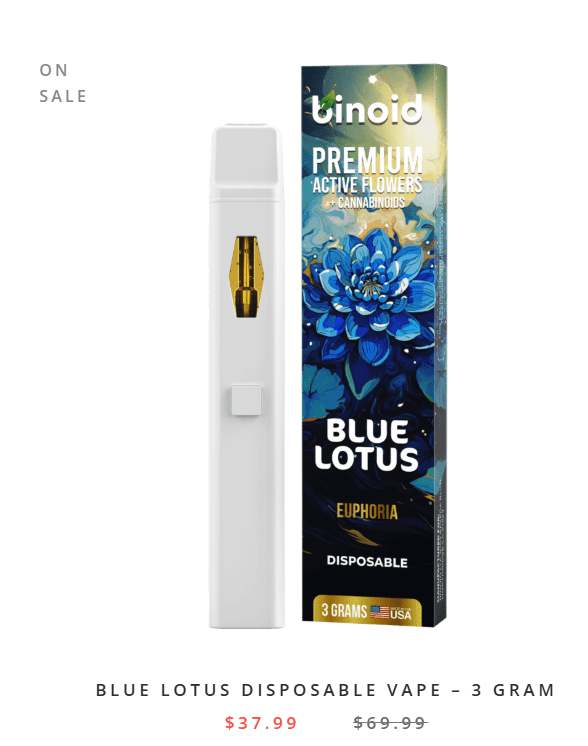
Contender #2: Blue Lotus
Stepping away from the stark, powerful light of the modern laboratory, our second contender invites us into the soft, mystical twilight of the ancient world. Blue Lotus, or Nymphaea caerulea, is not a product of chemical synthesis but a botanical artifact, a sacred water lily whose legacy is measured in millennia. For the ancient Egyptians, this was no mere flower; it was a divine symbol of creation, a key to the spiritual realm, and an essential component of their most sacred ceremonies.
Its delicate petals were believed to hold the scent of the gods and the power to induce states of serene bliss and tranquil awareness. The journey offered by Blue Lotus stands in the starkest possible contrast to THCP. It is not an overwhelming wave of psychoactivity, but a gentle, subtle current that quiets the mind, soothes the spirit, and opens a space for peaceful introspection. To engage with Blue Lotus is to partake in a timeless tradition of gentle consciousness alteration.
Blue Lotus, which is more accurately a type of water lily than a true lotus, derives its unique properties from a pair of primary alkaloids contained within its petals and stamens: apomorphine and nuciferine. These compounds interact with the human body in a way that is distinctly different from cannabinoids. Apomorphine is what is known as a non-selective dopamine agonist, which means that it activates dopamine receptors in the brain. This action is associated with its mood-lifting and calming effects. Nuciferine, on the other hand, is thought to have properties that contribute to a sense of tranquility and physical relaxation.
The synergistic dance between these two alkaloids is what produces the signature Blue Lotus experience: a gentle, dream-like psychoactivity that is both calming and subtly euphoric. It does not produce the intense perceptual shifts associated with THC, but rather fosters a state of peaceful, lucid awareness. Users often describe a pleasant sensation of warmth, a quieted mind free from racing thoughts, and a deeper connection to their immediate surroundings.
The story of Blue Lotus is an epic tale woven deeply into the golden tapestry of ancient Egyptian history. For thousands of years, this flower was far more than just a beautiful plant; it was a central pillar of Egyptian cosmology, religion, and social life. The flower’s unique behavior—opening its petals to the morning sun and closing them again at night to sink below the water—was seen as a powerful metaphor for the fundamental cycles of life, death, and rebirth. It was directly linked to the creation myth, wherein the sun god Ra was said to have first emerged from the heart of a blue lotus that blossomed from the primordial waters.
This divine association made it a ubiquitous symbol in Egyptian art, seen in countless tomb paintings, hieroglyphic carvings, and on decorative objects. Pharaohs and queens are depicted holding the flower to their noses, inhaling its sacred fragrance, which was believed to be a pathway to the divine. It was also famously infused into wine, creating a potent elixir that was consumed at festivals and religious ceremonies to induce states of blissful ecstasy and spiritual insight. With the decline of the Egyptian civilization, the esoteric knowledge of the Blue Lotus faded for centuries, only to be rediscovered in modern times by those captivated by its rich and mystical legacy.
The contemporary revival of Blue Lotus has seen it adapted into a diverse range of product forms, making this ancient botanical more accessible than ever before. While traditional preparations like teas and wine infusions are still popular among purists, modern manufacturing has introduced convenient and user-friendly formats that cater to a broader audience.
These innovative products capture the essence of the flower, allowing individuals to explore its calming properties in ways that seamlessly integrate with a modern lifestyle. This diversification has been instrumental in the flower’s resurgence, transforming it from a historical curiosity into a relevant and beloved part of the contemporary wellness and ethnobotanical landscape:
Dried Flower: This is the most authentic and versatile form, consisting of the dried whole flowers or just the petals and stamens. Users can brew the dried flower into a fragrant, calming tea, which is the most traditional method of consumption. It can also be ground and smoked or vaporized, either by itself or blended with other herbs, offering a more immediate onset of its gentle effects. This form appeals to those who enjoy a hands-on, ritualistic engagement with their botanicals.
Disposable Vapes: Leveraging the convenience of modern technology, Blue Lotus extract is now widely available in disposable vape pens. These sleek devices offer a smoke-free and highly discreet way to enjoy the flower’s properties. The extract is gently heated into an inhalable vapor, providing a rapid delivery of its calming alkaloids. These vapes are often enhanced with natural flavors and may be combined with other complementary botanical extracts.
Pre-Rolls: For individuals who enjoy the experience of smoking but prefer to skip the preparation, pre-rolls are the perfect solution. These are ready-made joints filled with ground Blue Lotus flower. Often, they are blended with other synergistic herbs like damiana, mugwort, or lavender to create a more complex aromatic profile and a more nuanced relaxing effect. They offer a simple, grab-and-go way to enjoy this ancient flower.
Gummies: One of the newest and most popular innovations, Blue Lotus gummies provide a tasty, precisely dosed, and smoke-free way to consume the flower’s extract. Each gummy contains a specific milligram amount of the active compounds, allowing for consistent and predictable experiences. Because the extract is absorbed through the digestive system, gummies have a slower onset but provide a longer-lasting period of gentle tranquility, making them ideal for sustained relaxation.
A fascinating development in the modern botanical market is the art of combining Blue Lotus extract with the diverse world of cannabinoids. This practice is rooted in the concept of synergy, where the unique properties of different plants can work together to create an experience that is greater than the sum of its parts. The serene, dopamine-related effects of Blue Lotus’s alkaloids can be skillfully paired with the cannabinoid system-targeting effects of compounds from the hemp plant. For example, blending Blue Lotus with non-psychoactive cannabinoids like CBD or CBN can create a powerful combination aimed at profound relaxation and physical ease.
When combined with a gentle psychoactive cannabinoid like Delta 8 THC, the result can be a uniquely blissful and dreamy state of mind that is both uplifting and deeply calming. For the more adventurous user, blends with potent cannabinoids like THCA Liquid Diamonds or THC-P aim to create a multi-layered and intensely profound journey, where the lucidity of Blue Lotus might serve as a grounding force for the powerful effects of the THC analogs. These thoughtful formulations are pushing the boundaries of customized botanical experiences.
The exploration of synergistic blends does not end with cannabinoids; Blue Lotus is also being thoughtfully combined with extracts from various mushrooms, another category of powerful natural agents. This trend is especially appealing to individuals interested in deepening their practices of meditation, introspection, and dream exploration. The most notable of these pairings is with extracts derived from the Amanita muscaria mushroom. While this iconic mushroom has a complex history, modern extracts are often processed to harness its calming and dream-inducing properties, which are attributed to the compound muscimol.
When the tranquil essence of Blue Lotus is combined with the oneirogenic (dream-enhancing) qualities of Amanita extract, the result is a potent blend designed for nighttime use. Users of these combinations often seek deep states of relaxation, heightened dream clarity and vividness, and a unique pathway for inner exploration, making this pairing a choice for the experienced ethnobotanical enthusiast.
The principle of creating harmonious blends extends to pairing Blue Lotus with a variety of other beneficial flowers and herbal extracts. Formulators often select botanicals with complementary properties or similar historical uses to craft a more holistic and well-rounded final product. This practice reflects a deep understanding of traditional herbalism. For instance, Blue Lotus is frequently combined with its botanical cousins, Pink Lotus (Nelumbo nucifera) or White Lotus (Nymphaea ambo).
These blends aim to offer a fuller spectrum of the calming and mood-lifting qualities associated with these revered water lilies. Another very common ingredient in Blue Lotus blends is Passionflower (Passiflora incarnata), an herb with a long history of use for promoting a sense of calm and relaxation. The addition of Passionflower can help to ground the ethereal, dreamy effects of the Blue Lotus, adding a deeper layer of physical tranquility that makes the blend exceptionally suitable for unwinding and achieving a state of peace.
In the United States, the legal framework surrounding Blue Lotus is remarkably simple and permissive, standing in stark contrast to the intricate and often contradictory laws governing cannabis and its derivatives. At the federal level, Blue Lotus (Nymphaea caerulea) is not classified as a controlled substance. This means that for the vast majority of the country, the plant, its extracts, and various consumer products containing it are perfectly legal to cultivate, possess, buy, and sell.
This lack of federal prohibition has allowed a flourishing and accessible market to emerge, with Blue Lotus products readily available through online retailers, specialty herb stores, and local smoke shops. There is, however, one very significant and well-known exception: the state of Louisiana. In Louisiana, the law specifically prohibits the cultivation, sale, and possession of Nymphaea caerulea if it is intended for human consumption. For residents outside of Louisiana, Blue Lotus can be enjoyed without legal fear, though it is always a prudent measure to be aware of any hyper-local ordinances that might exist.
The signature effects of Blue Lotus are celebrated for their subtlety, gentleness, and profoundly calming nature. The experience is not one of overwhelming intoxication but of a graceful transition into a more serene and peaceful state of being. It often begins with a soft wave of physical relaxation that seems to dissolve bodily tension, which is frequently described as a pleasant warmth or feeling of lightness. Mentally, its most prized attribute is its ability to quiet the “monkey mind”—the endless stream of internal chatter and anxious thoughts. This quieting effect leads to a state of calm clarity and peaceful awareness, making it an exceptional aid for mindfulness.
While it is certainly psychoactive, it does not typically distort reality or impair cognitive function. Instead, users report a mild and pleasant euphoria, a dreamy quality to their thoughts, and a subtle enhancement of their sensory perception. This unique profile makes it a favored companion for activities like meditation, yoga, creative pursuits, or simply quiet reflection. Furthermore, its well-documented ability to enhance the vividness and lucidity of dreams makes it a popular botanical to consume before sleep.
Pros & Cons
To fully appreciate the unique position Blue Lotus holds in the world of botanicals, one must consider both its celebrated strengths and its inherent limitations. Its appeal is ancient and deep, tied to a promise of gentle tranquility and spiritual connection. Yet, as with any substance that alters consciousness, a balanced perspective is crucial. Examining the pros and cons allows a prospective user to align their expectations with reality and to make a choice that is both informed and intentional, ensuring their journey with this sacred flower is a positive one.
Pros:
Gentle and Manageable Effects: The foremost advantage of Blue Lotus lies in the subtle and non-overwhelming nature of its psychoactive experience. It ushers in a state of calm and mild euphoria without the intensity or potential for paranoia that can accompany more potent substances. This makes it an ideal choice for those new to psychoactive botanicals or for anyone seeking a gentle aid for relaxation that won’t be incapacitating.
Broadly Legal and Accessible: Outside of Louisiana, Blue Lotus enjoys a legal status that makes it incredibly easy to obtain. It is not federally regulated as a controlled substance, allowing it to be sold openly by a wide range of online and retail vendors. This accessibility removes the legal risks and complexities associated with navigating the patchwork of state-by-state cannabinoid laws.
Rich Historical and Spiritual Significance: Using Blue Lotus is an act of participating in a tradition that spans millennia. Its deep and profound connection to ancient Egyptian spirituality, where it was revered as a symbol of creation and a key to the divine, adds a layer of meaning and reverence to the experience that is unmatched by modern products. This historical weight can transform its use from simple consumption into a mindful ritual.
Excellent for Meditation and Mindfulness: The mind-quieting properties of Blue Lotus make it a superb tool for enhancing meditation, yoga, or any practice that requires a calm and focused state. By helping to mute the internal monologue and reduce mental clutter, it can allow users to achieve deeper states of presence and introspection.
Potential for Vivid and Lucid Dreaming: One of the most unique and sought-after benefits of Blue Lotus is its reported effect on the dream state. Many users find that consuming it before sleep leads to dreams that are more colorful, memorable, and easier to consciously navigate (lucid dreaming). This makes it a fascinating tool for those interested in exploring their subconscious mind.
Versatile Consumption Methods: Blue Lotus offers a wide array of consumption options to fit any preference. From the traditional ritual of brewing a tea to the modern convenience of a disposable vape or a tasty gummy, users can choose the method that best suits their lifestyle. This flexibility ensures that anyone can find a comfortable way to experience its benefits.
Synergistic Blending Potential: The gentle nature of Blue Lotus makes it an excellent complementary ingredient in herbal blends. It pairs beautifully with other calming botanicals like passionflower, as well as with various cannabinoids and mushroom extracts, allowing for the creation of complex and tailored experiential profiles.
Generally Clear-Headed and Non-Impairing: While it induces a dream-like state, Blue Lotus does not typically cause the cognitive impairment associated with many other substances. Users often report feeling relaxed yet clear-headed and fully functional, allowing them to enjoy a tranquil state without sacrificing their mental acuity.
Cons:
Subtle Effects May Disappoint Some: For those accustomed to the potent and unmistakable effects of THC, the subtlety of Blue Lotus can be underwhelming. Its influence is gentle and requires a certain degree of mindfulness to fully perceive and appreciate. Users seeking a strong, recreational “high” will likely find it lacking in intensity.
Lack of Modern Scientific Research: Despite its thousands of years of historical use, Blue Lotus has been the subject of very little modern clinical research. There is a scarcity of scientific data on its long-term effects, precise mechanisms of action, and potential interactions with medications. Users must proceed based on anecdotal evidence and traditional knowledge.
Unregulated Market Leads to Quality Variance: The market for Blue Lotus products is largely unregulated by any government body. This can lead to significant inconsistencies in the quality, potency, and purity of products from different vendors. It is incumbent upon the consumer to find reputable sources that provide lab testing to ensure their products are clean and accurately labeled.
Illegal in Louisiana: The specific prohibition on Blue Lotus for human consumption in the state of Louisiana is a major drawback for residents there. It also serves as a reminder that even for federally legal substances, state laws can create exceptions, and it is always important to be aware of local regulations.
How to Go About Choosing Which Option
The decision between THC-P Flower and Blue Lotus is one of the most straightforward yet consequential choices a botanical explorer can make. It is a decision that hinges entirely on a clear understanding of your own tolerance, experience level, and ultimate intention. These two contenders do not occupy the same space; they exist on opposite ends of the known psychoactive spectrum. One offers a journey to the summit of a formidable, towering mountain, a climb that is challenging and potentially perilous but promises an unparalleled view. The other invites you to rest peacefully in a serene, hidden valley, a place of quiet contemplation and gentle discovery. To choose correctly, you must first decide which landscape your spirit is prepared to enter.
|
Feature |
THC-P Flower |
Blue Lotus |
|---|---|---|
|
Nature of Product |
Infused Product (Hemp flower coated with synthetic THC-P distillate) |
Natural Product (Dried petals and flowers of the plant) |
|
Primary Active Compounds |
Tetrahydrocannabiphorol (THC-P), a hyper-potent cannabinoid |
Apomorphine & Nuciferine (alkaloids) |
|
Typical Experience |
Extremely potent, overwhelmingly euphoric, long-lasting, heavy body high |
Extremely gentle, calming, dreamy, lucid, tranquil, non-intoxicating |
|
Required User Experience |
Experts Only. High tolerance for THC is essential. |
Beginner Friendly. Suitable for all experience levels. |
|
Legal Status (U.S.) |
Tenuous; Federally compliant as hemp, but banned in many states |
Federally legal and unregulated in most states, except Louisiana |
|
Best Suited For… |
Experienced users seeking maximum intensity; breaking tolerance plateaus |
Meditation, relaxation, dream enhancement, spiritual practice, gentle mood lift |
Ultimately, your choice should be guided by a principle of profound self-awareness and caution, so…
Choose THC-P flower if (and only if): You are a very experienced cannabis consumer with a significant, well-established tolerance for high doses of Delta 9 THC. You should be actively seeking the most potent and intense psychoactive experience available on the hemp market and be fully prepared for its overwhelming and long-lasting effects. You must be in a safe, comfortable, and controlled environment with no responsibilities for many hours. This is a product for the seasoned psychonaut looking to explore the absolute limits, and it should be approached with the utmost caution and respect, starting with the smallest possible amount.
Choose Blue Lotus if: You are seeking gentle relaxation, spiritual connection, or a mild and pleasant mood enhancement. It is the perfect choice for anyone new to psychoactive botanicals, sensitive to THC, or for experienced users who want a tool for meditation, mindfulness, or creative work without any intoxication or impairment. If your goal is to quiet your mind, unwind after a stressful day, or explore the vivid landscape of your dreams, Blue Lotus is a safe, accessible, and historically rich option that offers a journey into tranquility, not intensity.
The Summit or the Sanctuary: Your Path to Discovery
The final decision between the raw power of THC-P flower and the gentle grace of Blue Lotus is a reflection of your current quest. It is a choice between a substance that demands your surrender to its overwhelming force and a flower that asks only for your quiet attention. One is a rocket ship to the outer reaches of psychoactivity; the other is a key to the calm, quiet room within your own soul.
There is no judgment in the path you choose, only the wisdom to know which one you are truly prepared for. Whether you seek the breathtaking view from the summit or the profound peace of the sanctuary, may your journey be intentional, respectful, and ultimately, enlightening.
TO BUY THC-P FLOWER CLICK HERE
Recommended products
-
THCA Flower – Indoor Exotics – Gold Line
$37.99$69.99 -
THCA Flower – Mystery Reserve
$41.99$79.99 -
THCA Smalls
$149.99$256.99

